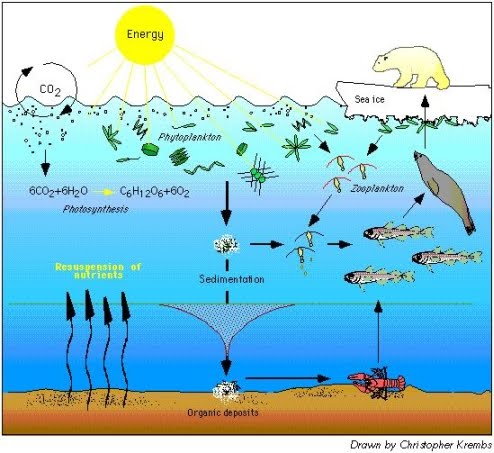Hmm.... one day your teacher leaves science homework for you. It tells you to list three carbon sinks, but since you didn't pay attention in class, you have no idea what to do. Asking the teacher was definitely not an option, so you check it up on Google. Immediately, it tells you the definition or carbon sinks which is matter that has come from a recently living matter, such as things like limestone, shells, plastic, and long living trees.
They are the opposite of sources, which is like weathering of limestone, and other respiration of living organisms. Instead of releasing carbon, it absorbs carbon. For example, the trees are the best example. as we all know trees are the ones who are always making the oxygen we breath in clean and fresh, but without the carbon dioxide which helps it become healthy, the tree will not
They are the opposite of sources, which is like weathering of limestone, and other respiration of living organisms. Instead of releasing carbon, it absorbs carbon. For example, the trees are the best example. as we all know trees are the ones who are always making the oxygen we breath in clean and fresh, but without the carbon dioxide which helps it become healthy, the tree will not
survive, therefore we will not either.
Granite, is another carbon sink. As we all know crystals form by heat and pressure, but within that heat and pressure also lies carbon dioxide which helps the crystals grow. The crystals suck up the carbon, and gradually the crystal begins to cool down and become solid as time passes by.
The last example, of a carbon sink is plastic, one of the most common things we use everyday. Now why does plastic need carbon dioxide? The answer is simple. Plastic is made up with elements of carbon dioxide, oxygen, sulfur, chlorine, and many others. After you've seen three examples of what carbon sinks are, you should have a better idea of what they do and what kinds of things can count as an carbon sink. Sometimes, it's just hard to believe that something so simple, for example, a ziploc bag, actually needs carbon in order to be made.
Granite, is another carbon sink. As we all know crystals form by heat and pressure, but within that heat and pressure also lies carbon dioxide which helps the crystals grow. The crystals suck up the carbon, and gradually the crystal begins to cool down and become solid as time passes by.
The last example, of a carbon sink is plastic, one of the most common things we use everyday. Now why does plastic need carbon dioxide? The answer is simple. Plastic is made up with elements of carbon dioxide, oxygen, sulfur, chlorine, and many others. After you've seen three examples of what carbon sinks are, you should have a better idea of what they do and what kinds of things can count as an carbon sink. Sometimes, it's just hard to believe that something so simple, for example, a ziploc bag, actually needs carbon in order to be made.





